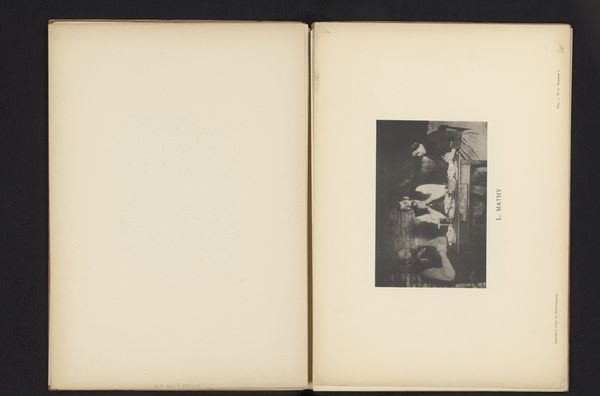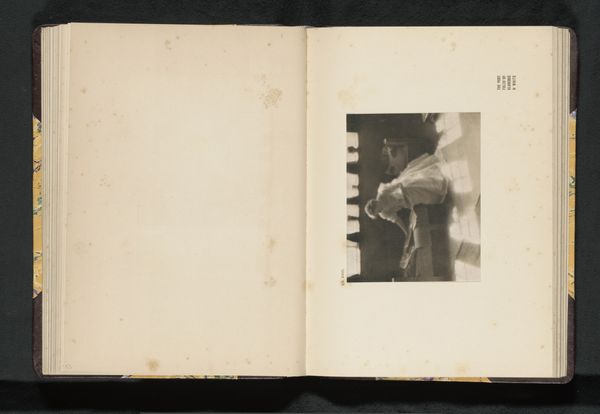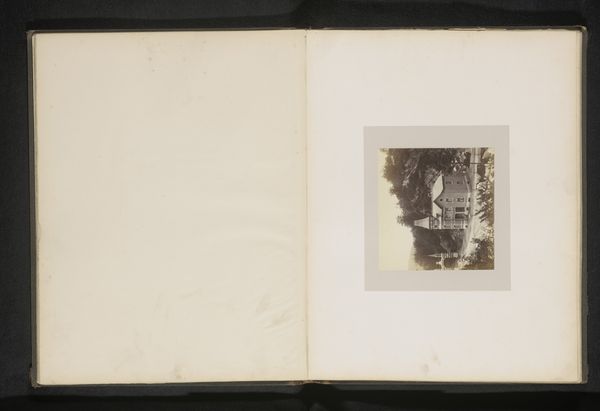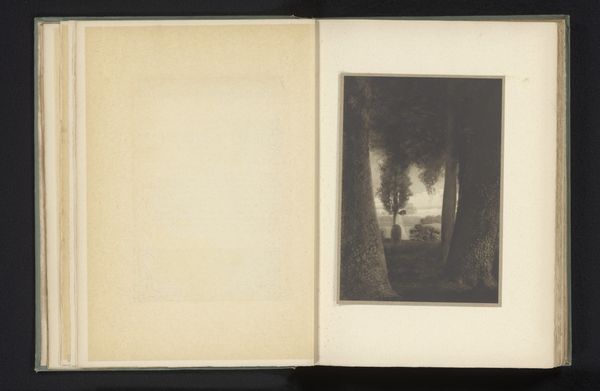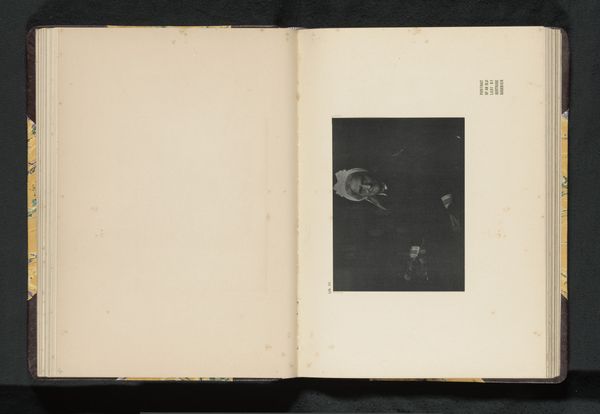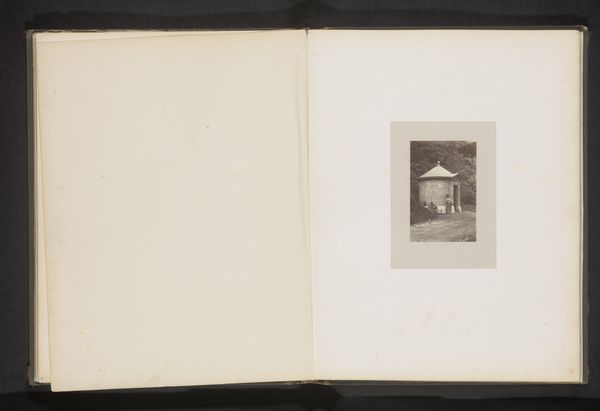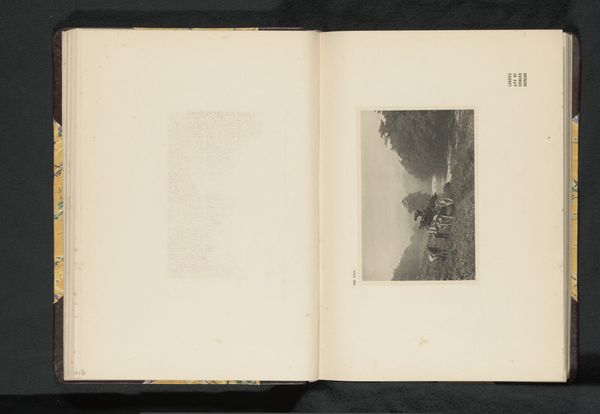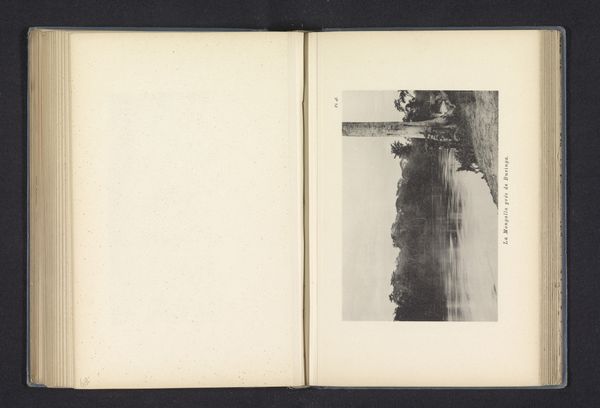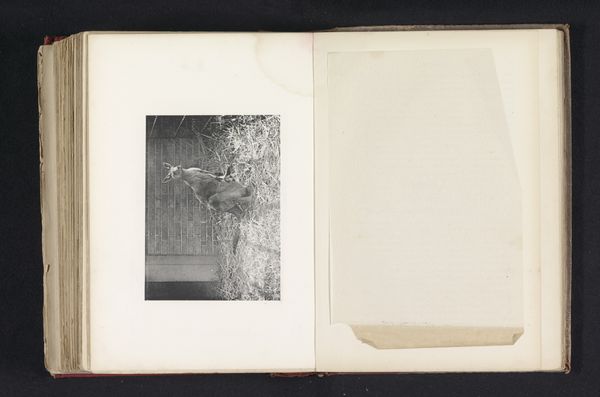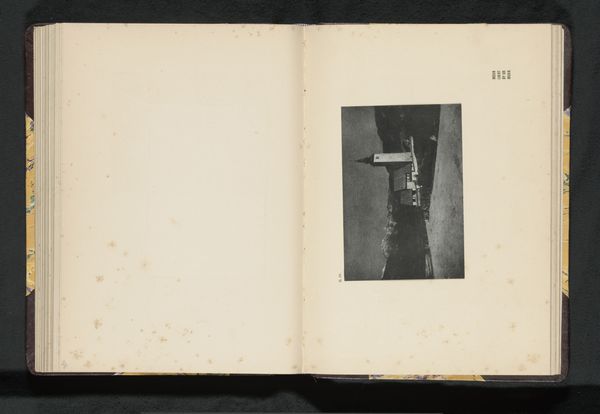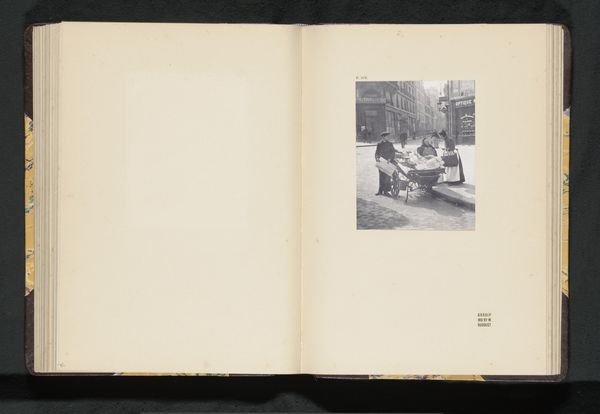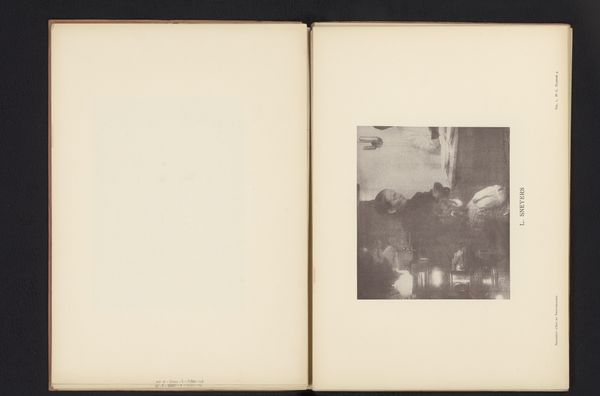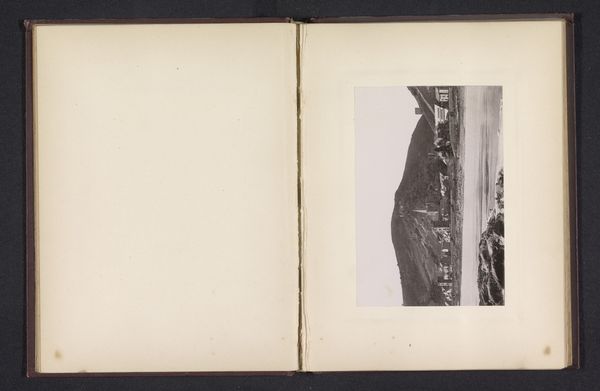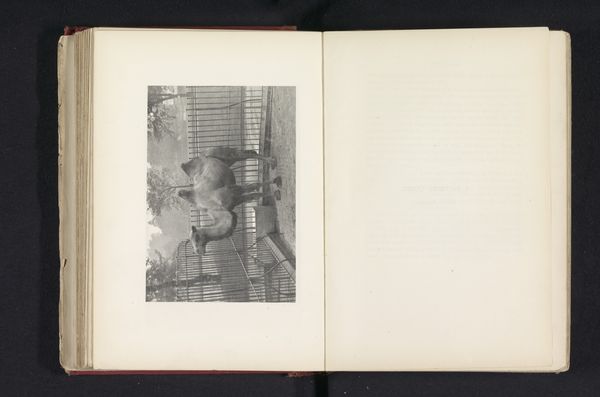
print, photography
# print
#
landscape
#
photography
#
realism
Dimensions: height 115 mm, width 213 mm
Copyright: Rijks Museum: Open Domain
Editor: So, this print, "Boer loopt achter een paar koeien op een landweg," created before 1898 by Léon Bovier, has a melancholic quality. The composition and the use of grayscale tones create a very serene landscape. What story do you think this piece is telling? Curator: It's tempting to view this pastoral scene through rose-colored glasses, but we must consider the context. This was a period of immense social upheaval and land exploitation, colonialism. How does Bovier's depiction reinforce or challenge the dominant narratives surrounding rural life and labor at the time? Did Bovier have any interest in class struggle and leftist political movements, or perhaps a desire to address inequities within the then current social environment? Editor: That's an interesting angle, because initially, it seemed like such an ordinary, almost picturesque scene. I hadn't thought about the economic pressures or the power dynamics. How does realism play into the political context of this work? Curator: Realism, seemingly objective, often carries inherent biases. By focusing on the surface of rural life – the farmer and his cows – Bovier might be obscuring the larger, systemic forces shaping their existence. Who does this imagery benefit and who might it invisibilize? Consider also the gaze of the artist. Are we invited to empathize, or simply observe from a distance? The act of observation is rarely neutral. Editor: So by considering the social and historical context, we start seeing a much more complex narrative than just a simple landscape. It's almost a commentary. Curator: Exactly. By situating it within a wider social fabric of inequalities, we unveil potential implications about power, class, and even the romanticization of rural poverty. The artist's intentionality is not fully known. Nonetheless, examining these artworks with our understanding of historical background provides new perspectives. Editor: Thank you for opening my eyes to this interpretation! Now when I see art like this, I'm motivated to consider more about the power dynamics present at the time. Curator: That’s what I hoped! Art can prompt discussions about justice, history, and equity.
Comments
No comments
Be the first to comment and join the conversation on the ultimate creative platform.
